1. Orvieto Cathedral (Duomo di Orvieto)
Orvieto's main tourist attraction is a striking church with an unusual façade, completely different from what you've seen elsewhere in Italy. It seems that the interior of the temple was exposed to the outside - the alternating protrusions of black basalt and yellow limestone were decorated by the best artists and sculptors of the time, covering every surface with sculptures, stained glass windows and colorful mosaics. But unlike most Italian churches with mosaics adorning their facades, this is clearly and unmistakably Gothic in design, not a Byzantine church. Orvieto Cathedral is, in fact, one of the finest examples of Italian Gothic architecture. Intricate modern bronze doors made in 1969 belong to the hand of Emilio Greco.
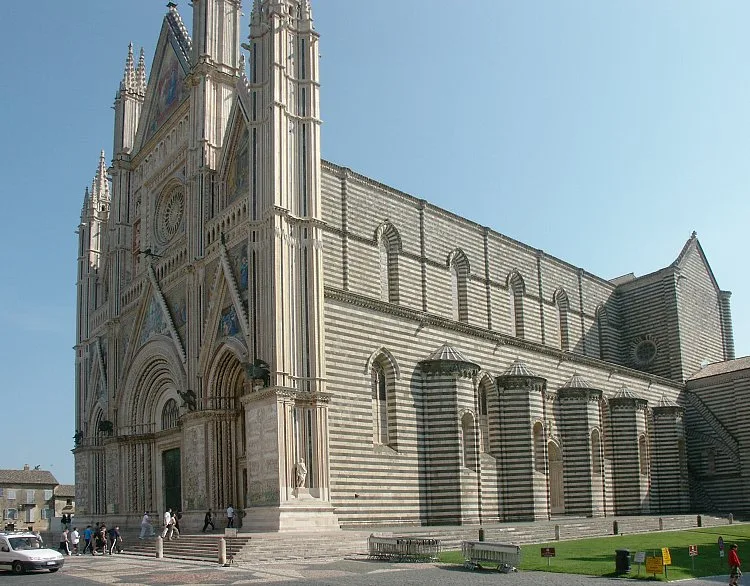 |
| Orvieto Cathedral |
2. Well of St. Patrick (Pozzo di San Patrizio)
Outside Fortezza (now public gardens) is the Well of St. Patrick, a 61 meter deep well with two separate spiral staircases arranged in a spiral along the walls. One ladder was built to descend and the other to climb donkeys that lifted water from the well, and the ingenious double helix design allowed them to move in both directions continuously without collision. In 1527, during the siege of Rome, Pope Clement VII took refuge in Orvieto, and it was on his instructions that this well was dug to supply water in case of a siege.
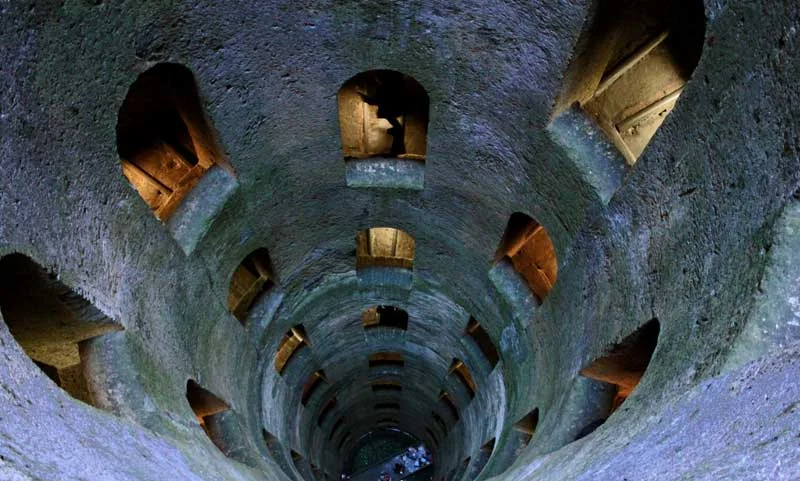 |
| Well of St. Patrick |
3. Torre del Moro
The quadrangular tower overlooking the heart of the old town of Orvieto, 40 meters high, was built at the end of the 13th century for defensive purposes, on it was an observation post for the city's defenders. In the 1800s, it became a cistern for the new aqueduct system, and the clock was installed in 1876. The Torre del Moro a magnificent panoramic view of the city and its surroundings.
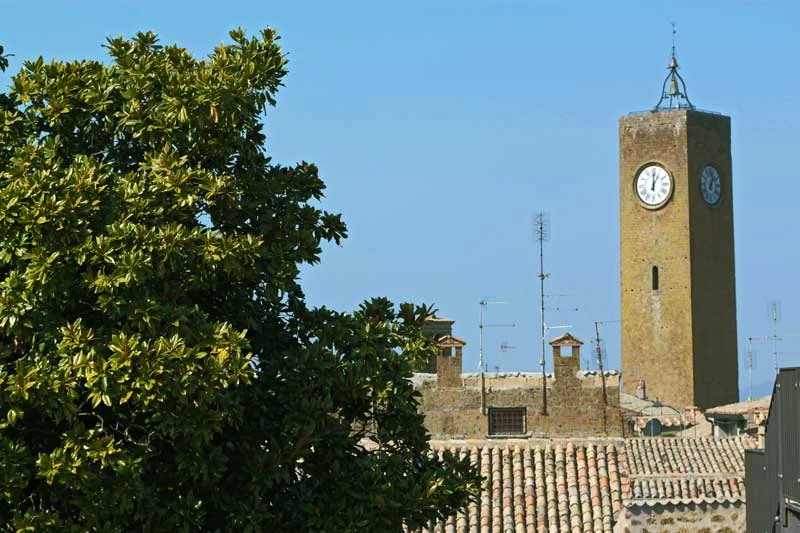 |
| Torre del Moro |
4. Corso Cavour
Orvieto's main street, Corso Cavour, crosses the city from east to west and along it you will find some of the city's main attractions. At the junction of Corso Cavour with Via del Duomo is the famous watchtower - Torre del Moro, opposite the 16th century palace of Gualterio with a beautifully decorated late Renaissance door. Apart from the massive 12th-century Comunale Palace, the street's attraction is the beautiful façade of the Church of Sant'Andrea, with its 12-sided 11th-century tower. In medieval times, three popes were appointed in this church - Martin IV, Nicholas IV and Boniface VIII.
 |
| Corso Cavour |
5. Via della Cava
Via della Cava and houses built of tuff during the Middle Ages make this part of the city a marvelous place to visit Italy's past. The attraction of the Cava region is the underground grottoes and caves carved into the rock. The entire underground excursion route passes under this medieval quarter, in the underground you will see rooms used as a ceramics workshop in the Middle Ages, an Etruscan tomb, an old medieval textile workshop, and rooms used as dumpsites, where many amazing finds are constantly found. In addition, the Cava area was especially famous for its taverns and taverns, which were considered the best in the city.
 |
| Via della Cava |
6. Etruscan Buildings and Necropolis
The Necropolis "Crosifisso del Tufo", along with the remains of the Belvedere Temple, is still one of the most obvious witnesses of the Etruscan civilization, which for centuries inhabited the territory of the future Orvieto.
It is located just below the cliff and emerges from the ground like several other Etruscan tombs with a characteristic rectangular shape. Each grave has an Etruscan family name that can still be seen. All objects and vessels found in this necropolis and objects from Cannicella are presented in the museums of Orvieto.
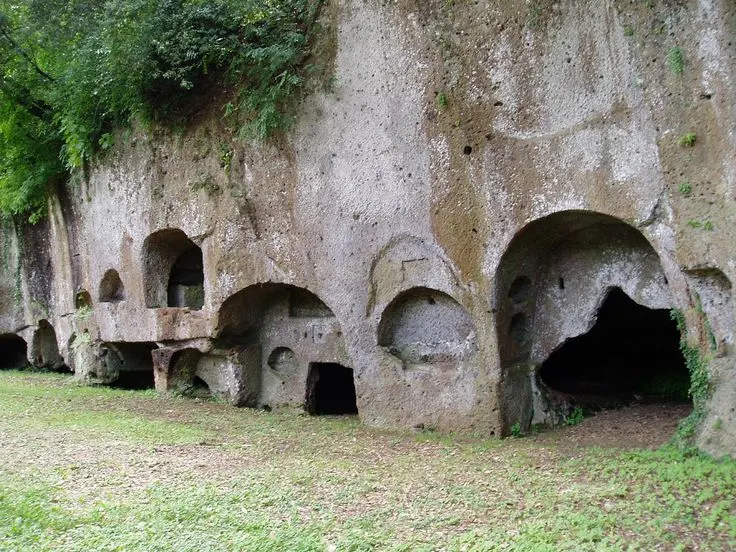 |
| Necropoli Etrusca del Crocifisso del Tufo |
7. Museo Archeologico Nazionale di Orvieto
The museum offers a guided tour of the excellent collection of Etruscan artifacts found during archaeological excavations in Orvieto. Of interest are the numerous burial urns (canopi), often with bronze masks, and gravestones (cippi), including one, 6th century, in the shape of a warrior's head; ceramic antefixes and other sculptures from the disappeared Belvedere temple.
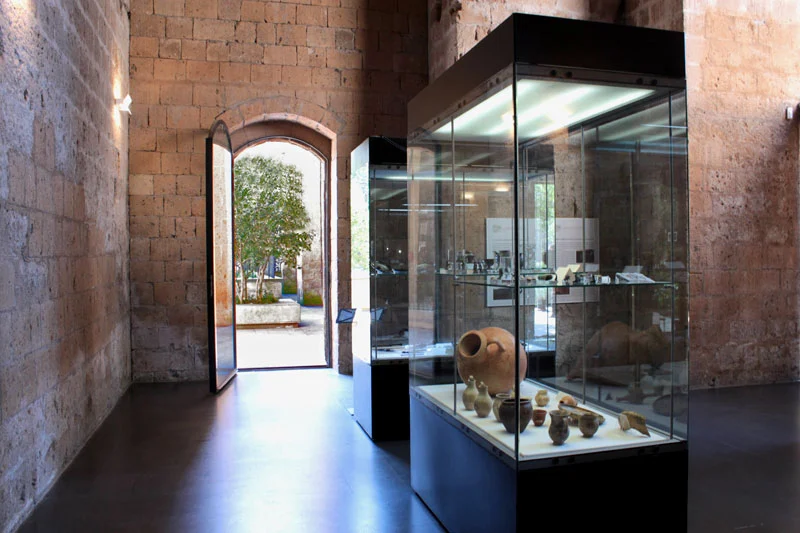 |
| Museo Archeologico Nazionale di Orvieto |